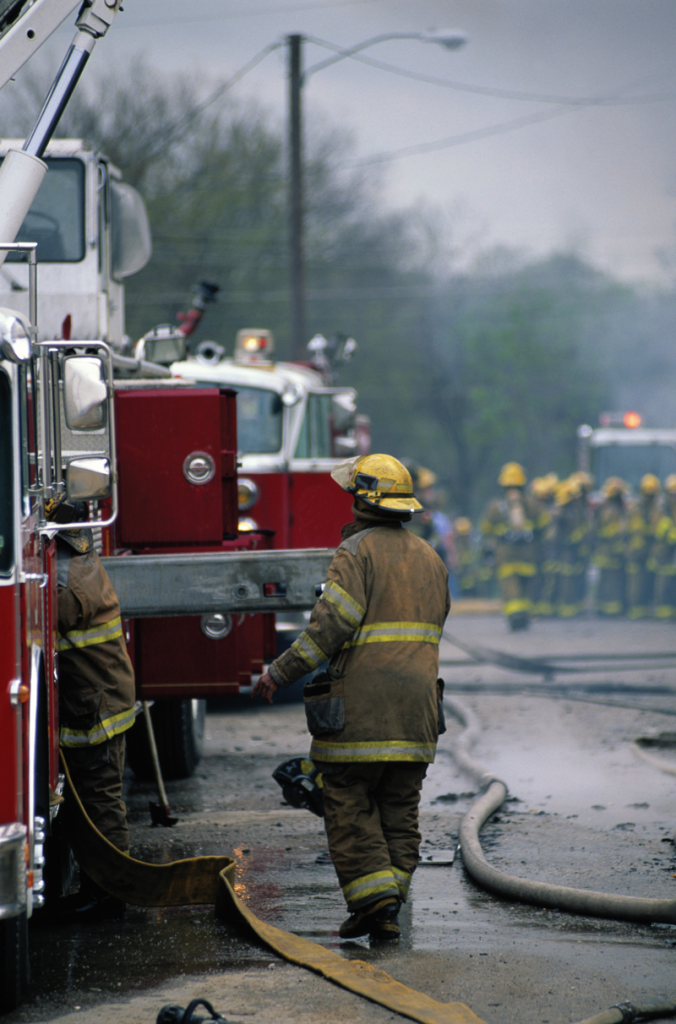Parking, Safeguards and Evacuation
 If a natural gas leak is detected or suspected, confirm your dispatcher has notified NIPSCO, and follow the steps listed in this section. Public safety should be your number-one concern for the duration of the incident response.
If a natural gas leak is detected or suspected, confirm your dispatcher has notified NIPSCO, and follow the steps listed in this section. Public safety should be your number-one concern for the duration of the incident response.
Parking
- Approach cautiously. Park emergency vehicles away and upwind from the area. A distance of 100 meters (330 feet) is recommended if possible.
- Park safely out of the collapse zone of involved structures and away from storm sewer grates, manhole covers and gas valve covers.
Safeguards
- Never enter a manhole, sewer or any other type of underground vault.
- Eliminate any potential ignition source, such as vehicle engines, flame-producing devices and anything that could produce sparks. Use intrinsically safe radios and flashlights.
- If you must approach the incident, involve the minimum number of personnel, and be sure each person is wearing full personal protective equipment (PPE) and self-contained breathing apparatus (SCBA).
- If it is safe to do so, monitor the atmosphere using multiple monitors.
- Maintain a safe standoff distance from buildings with gas.
Evacuation
- Evacuate the area and nearby structures immediately—per minimum distances in Guide 115 of the DOT Emergency Response Guidebook until further assessment is complete. See Resources menu above.
- The IC will make the final determination of the extent of the evacuation.
- Secure the area with caution tape. Reroute traffic, if necessary.
